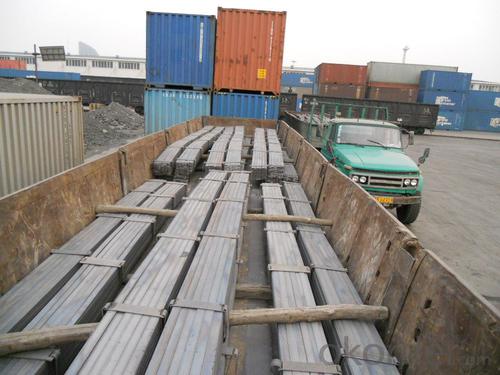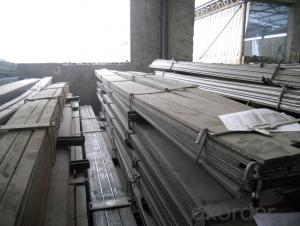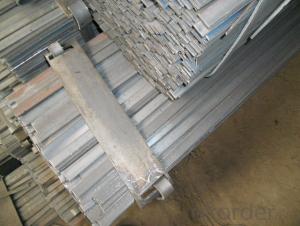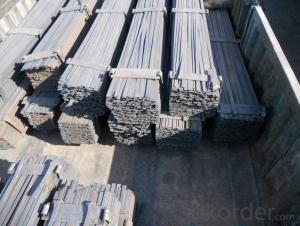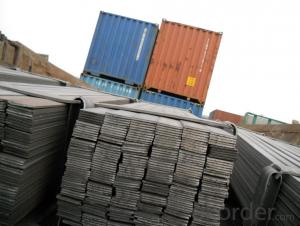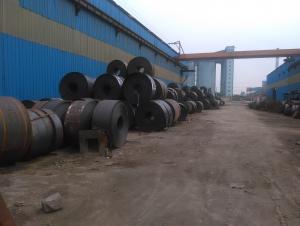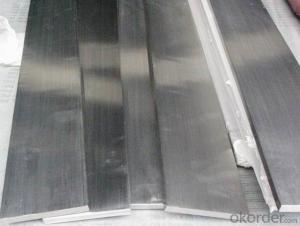GB Standard Steel Flat Bar with High Quality 30mm
- Loading Port:
- Tianjin
- Payment Terms:
- TT OR LC
- Min Order Qty:
- 25 m.t
- Supply Capability:
- 15000 m.t/month
OKorder Service Pledge
OKorder Financial Service
You Might Also Like
Product Description of GB Standard Steel Flat Bar with High Quality 30mm:
Specification of GB Standard Steel Flat Bar with High Quality 30mm:
-Standard: GB
-Material: Q235
-Length: 6m, 12m
-Size:
| Size(mm) | Mass(Kg/m) |
| 30*5 | 1.18 |
| 30*8 | 1.88 |
| 30*10 | 2.35 |
Package & Delivery of GB Standard Steel Flat Bar with High Quality 30mm:
1.The steel flat bars will be packed in bundle with steel wire at each end of every bundle and color marking in order to help the customer to recognize his goods more easily at sight.
2. And the steel flat bars could be loaded into 20ft or 40ft container, or by bulk cargo. If the weight of each bundle reaches more than 3.5 mt, the loading by break bulk cargo should be choosed. When the weight of each bundle reaches less than 3mt, the loading by container should be choosed.
3.As for the transportaion from mill to loading port, the truck will be usually used. And the maximum quantity for each truck is 40mt.
4.All in all, we could do in accordance with customer's request.
FAQ:
Q1: Why buy Materials & Equipment from OKorder.com?
A1: All products offered by OKorder.com are carefully selected from China's most reliable manufacturing enterprises. Through its ISO certifications, OKorder.com adheres to the highest standards and a commitment to supply chain safety and customer satisfaction.
Q2: How do we guarantee the quality of our products?
A2: We have established an advanced quality management system which conducts strict quality tests at every step, from raw materials to the final product. At the same time, we provide extensive follow-up service assurances as required.
Q3: How soon can we receive the product after purchase?
A3: Within three days of placing an order, we will arrange production. The shipping date is dependent upon the quatity, how many sizes you want and the plan of production, but is typically 1 month to 2 month days from the beginning of production.
Images of GB Standard Steel Flat Bar with High Quality 30mm: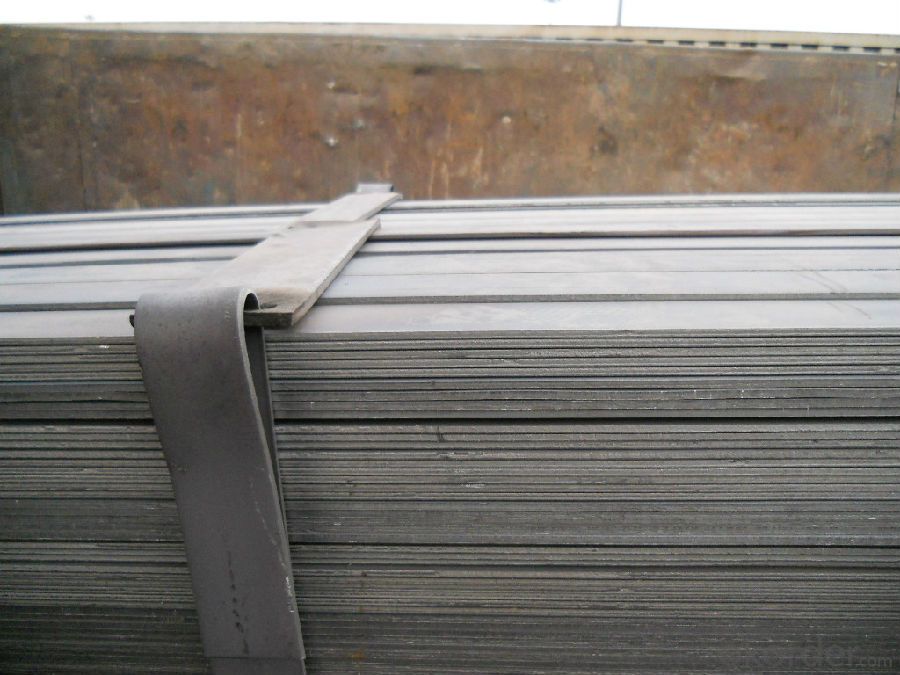
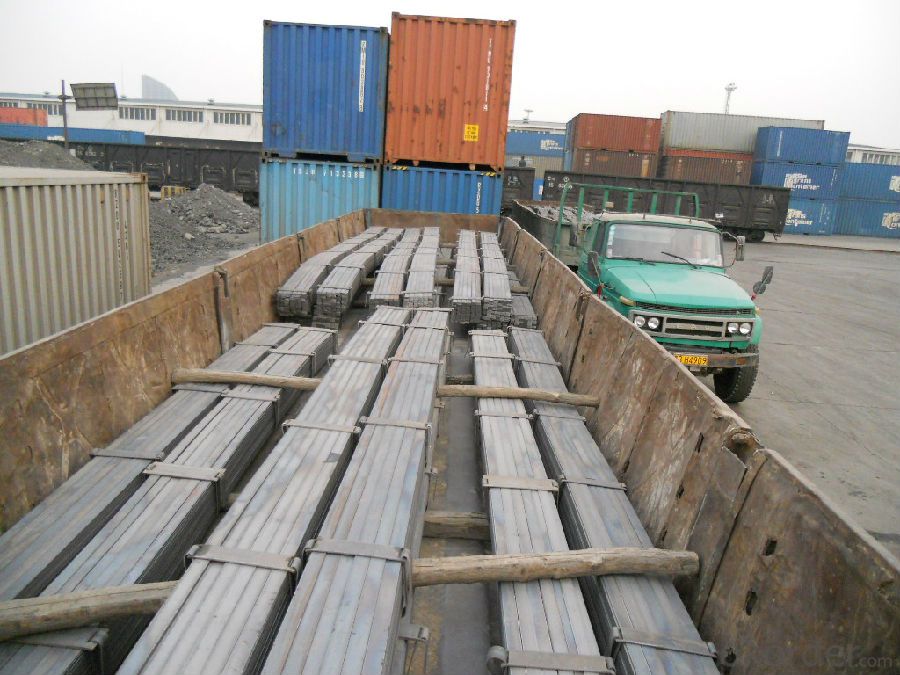
*If you would like to get our price, please inform us the size, standard/material and quantity. Thank you very much for your attention.
- Q: What is the difference between a steel flat bar and a steel angle bar?
- A steel flat bar is a long, rectangular-shaped bar with even width and thickness throughout its length, while a steel angle bar has a right angle or L shape, with two legs of equal or varying lengths. The main difference lies in their shapes, where the flat bar is flat and the angle bar has a distinct angular shape.
- Q: How do steel flat bars compare to wood for certain applications?
- Steel flat bars have several advantages over wood for certain applications. Firstly, steel is much stronger and more durable than wood, making it ideal for heavy-duty applications where strength is crucial. Steel flat bars can withstand much higher loads and pressures compared to wooden bars, making them suitable for structural support in construction projects. Additionally, steel flat bars are not susceptible to rot, decay, or pest infestations, which are common issues with wood. This makes steel a more reliable and long-lasting material, particularly in outdoor or moist environments. Steel is also fire-resistant, unlike wood, which can be a critical factor in applications where fire safety is a concern. Another advantage of steel flat bars is their consistent and uniform dimensions. Unlike wood, which can vary in size and shape due to natural defects, steel flat bars are manufactured to precise specifications and have consistent dimensions throughout. This makes them easier to work with and ensures a more accurate and precise fit in applications such as construction or fabrication. Furthermore, steel flat bars can be easily recycled, making them a more sustainable choice compared to wood. Steel is a highly recyclable material, and using steel flat bars instead of wood can contribute to reducing deforestation and environmental impact. However, it's worth noting that wood also has its advantages in certain applications. Wood is a natural material that provides a warm and aesthetically pleasing appearance, which may be desirable in some architectural or interior design projects. Wood can also be easier to work with and can offer more flexibility in terms of shaping or customization. In conclusion, steel flat bars outperform wood in terms of strength, durability, resistance to rot and pests, fire safety, and consistency of dimensions. However, the choice between steel and wood ultimately depends on the specific requirements and aesthetics of the application at hand.
- Q: How do you calculate the weight of a steel flat bar?
- In order to determine the weight of a steel flat bar, it is necessary to have knowledge of both the bar's dimensions and the density of steel. Initially, one must measure the length, width, and thickness of the flat bar, utilizing inches or any other suitable unit of measurement. Subsequently, the volume of the bar can be calculated by multiplying the length, width, and thickness. The volume can be determined by employing the formula: Volume = Length x Width x Thickness. Following the acquisition of the volume, it may be necessary to convert it to cubic inches. Afterwards, the density of steel needs to be determined, usually measured in pounds per cubic inch (lbs/in³). The density of steel can slightly vary depending on the specific alloy, although a commonly used approximation is 0.2836 lbs/in³. Lastly, the weight can be derived by multiplying the volume of the flat bar by the density of steel, utilizing the formula: Weight = Volume x Density. For instance, if the dimensions of the steel flat bar are 12 inches in length, 2 inches in width, and 0.5 inches in thickness, the volume would be 12 x 2 x 0.5 = 12 cubic inches. Assuming the density of steel is 0.2836 lbs/in³, the weight of the steel flat bar would amount to 12 x 0.2836 = 3.4032 lbs. Therefore, the approximate weight of the steel flat bar would be around 3.4 pounds.
- Q: Are steel flat bars suitable for fabrication of support structures?
- Yes, steel flat bars are suitable for the fabrication of support structures. Steel flat bars are known for their strength and durability, making them ideal for providing support in various construction and fabrication projects. They have a wide range of applications, including the construction of bridges, buildings, and other support systems. The flat shape of the bars allows for easy welding, bolting, or fastening, making them versatile in terms of fabrication. Additionally, steel flat bars can be easily cut and shaped to meet specific design requirements, making them a popular choice for support structures.
- Q: What are the different tolerances for steel flat bars?
- The tolerances for steel flat bars can vary depending on the specific requirements and industry standards. Generally, the most common tolerances for steel flat bars are determined by the American Society for Testing and Materials (ASTM) or the International Organization for Standardization (ISO). The tolerances for steel flat bars typically include dimensions such as width, thickness, and length. These dimensions are specified to ensure that the flat bars meet certain quality standards and can be used effectively in various applications. For width tolerances, the range can vary from as tight as ±0.005 inches (0.13 mm) to as loose as ±0.25 inches (6.35 mm). The specific tolerance is typically determined based on the required precision and application of the steel flat bar. For thickness tolerances, the range can vary from ±0.005 inches (0.13 mm) to ±0.25 inches (6.35 mm). Again, the specific tolerance depends on the desired precision and application. Length tolerances for steel flat bars can range from ±0.125 inches (3.18 mm) to ±1 inch (25.4 mm). This tolerance is crucial to ensure that the flat bars can be accurately cut to the desired length and fit properly in the intended application. It is important to note that these tolerances are just general guidelines and can vary based on the specific standards set by the manufacturer or customer requirements. It is always recommended to consult the relevant industry standards or specifications to determine the specific tolerances for steel flat bars in a particular application.
- Q: Can steel flat bars be used in earthquake-resistant structures?
- Yes, steel flat bars can be used in earthquake-resistant structures. Steel is known for its strength and ductility, making it a suitable material for withstanding seismic forces. Steel flat bars can be used in various structural elements, such as beams, columns, and braces, to provide stability and resistance against earthquakes.
- Q: What are the different methods of cutting steel flat bars?
- There are several methods of cutting steel flat bars, including using saws (such as band saws or circular saws), plasma cutting, laser cutting, waterjet cutting, and shearing. Each method has its own advantages and considerations based on factors such as speed, precision, cost, and the specific requirements of the project.
- Q: Are steel flat bars suitable for high-temperature environments?
- No, steel flat bars are not suitable for high-temperature environments as they tend to lose their strength and structural integrity when exposed to elevated temperatures.
- Q: Are steel flat bars resistant to heat?
- The resistance to heat in steel flat bars is typically good. The level of resistance depends on the specific type of steel and its composition. To measure heat resistance, one often examines a material's ability to maintain its strength and structural integrity at higher temperatures. Steel is renowned for its high melting point, which reduces the likelihood of deformation or structural failure when exposed to heat. However, it is important to acknowledge that extreme temperatures, like those found in furnaces or through prolonged exposure to high heat, can still cause some thermal expansion or weakening of the steel. Hence, when assessing the appropriateness of steel flat bars for a heat-related purpose, it is crucial to consider the specific application and potential temperature extremes.
- Q: Can steel flat bars be used for architectural designs?
- Yes, steel flat bars can be used for architectural designs. They are versatile and can be used in various applications such as structural support, decorative elements, and framing. Steel flat bars offer strength, durability, and a sleek modern aesthetic, making them a popular choice in architectural design.
Send your message to us
GB Standard Steel Flat Bar with High Quality 30mm
- Loading Port:
- Tianjin
- Payment Terms:
- TT OR LC
- Min Order Qty:
- 25 m.t
- Supply Capability:
- 15000 m.t/month
OKorder Service Pledge
OKorder Financial Service
Similar products
Hot products
Hot Searches
Related keywords





